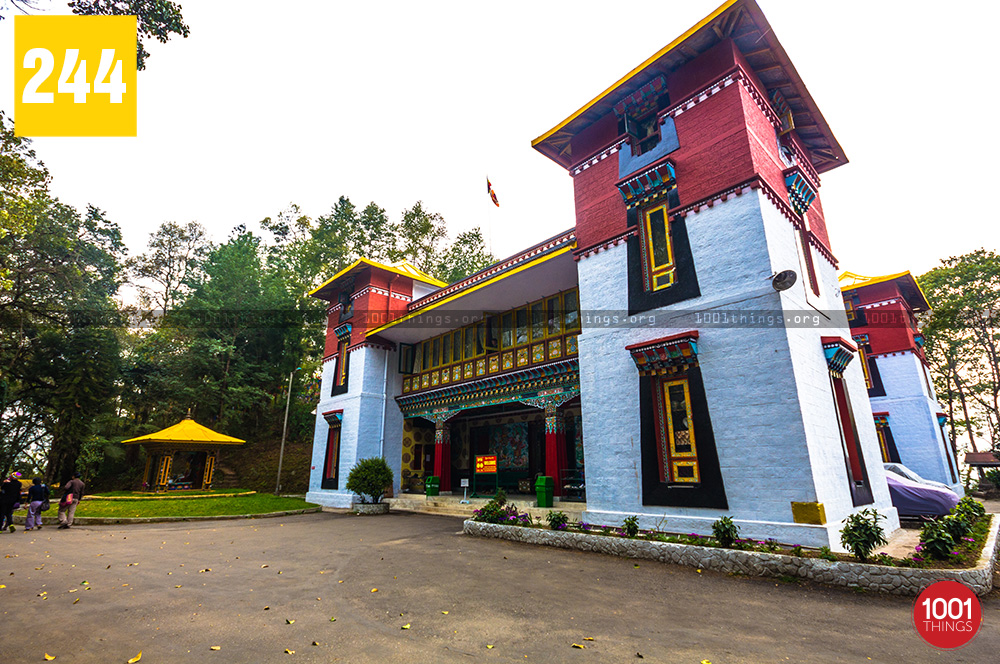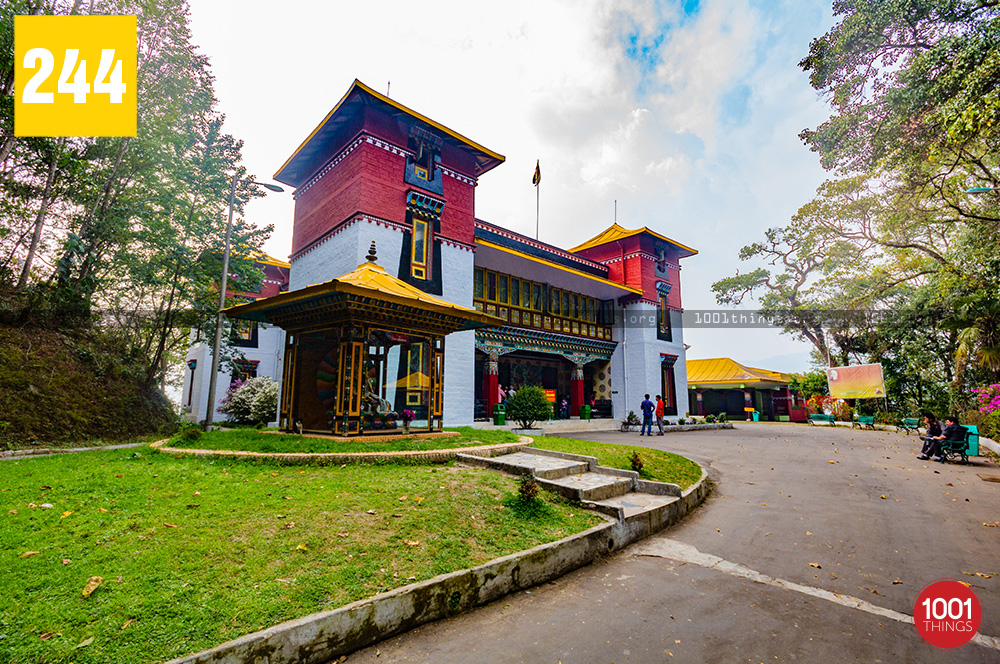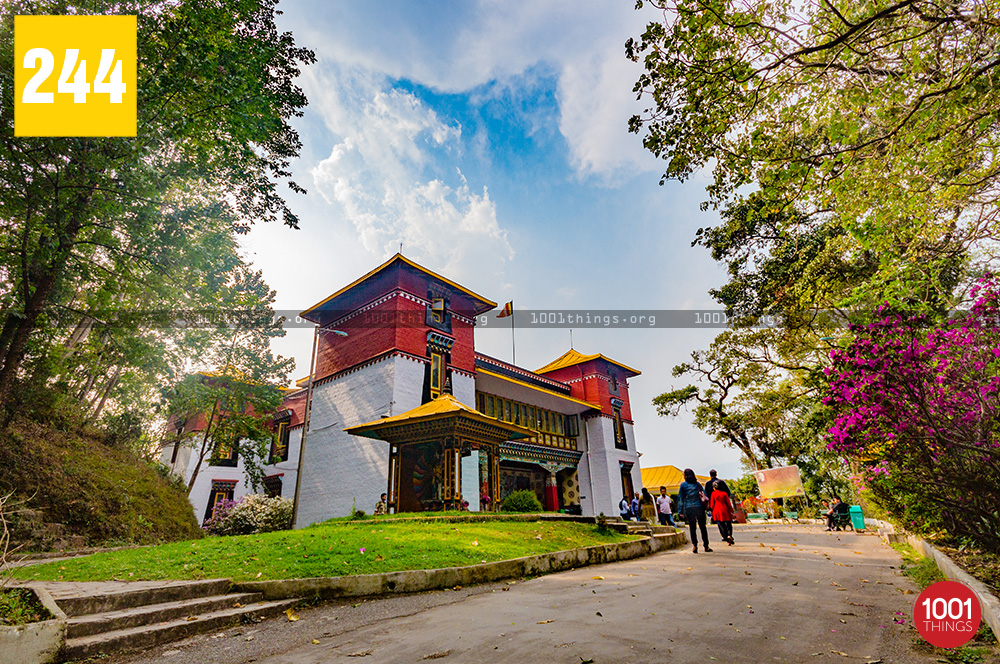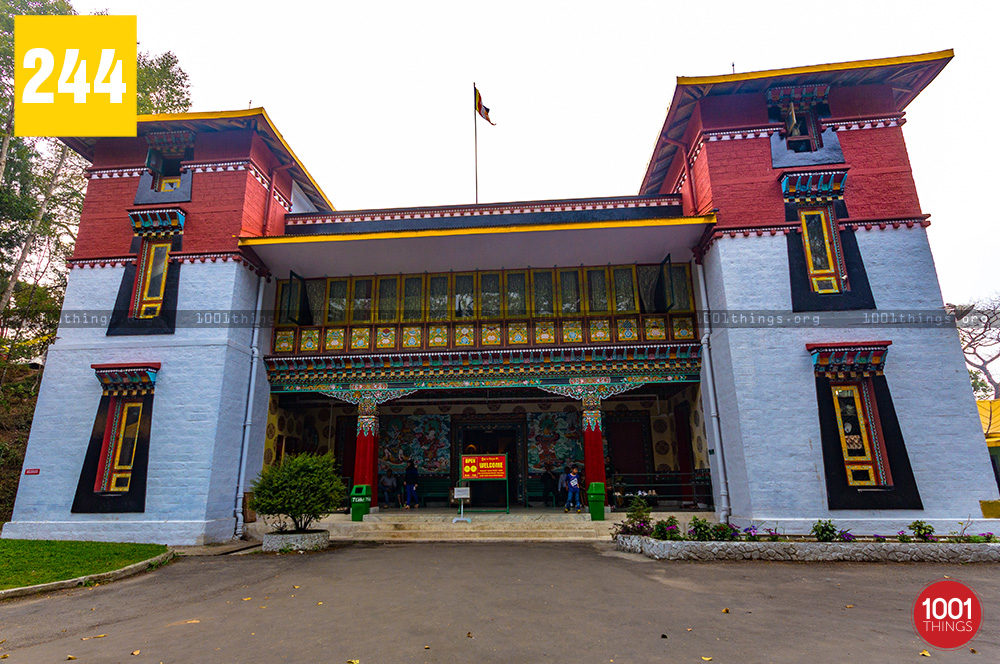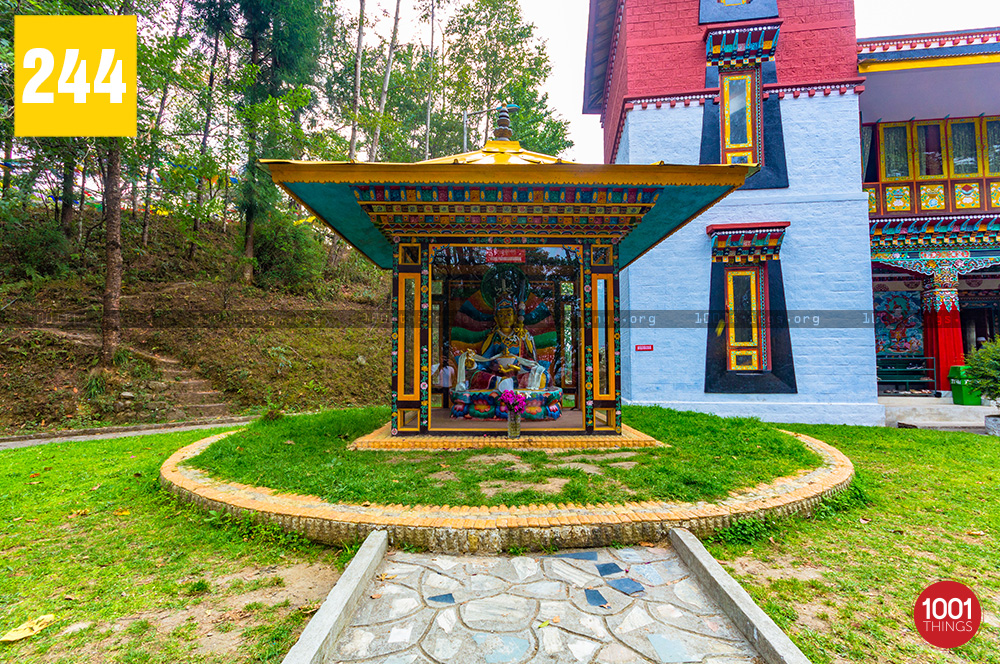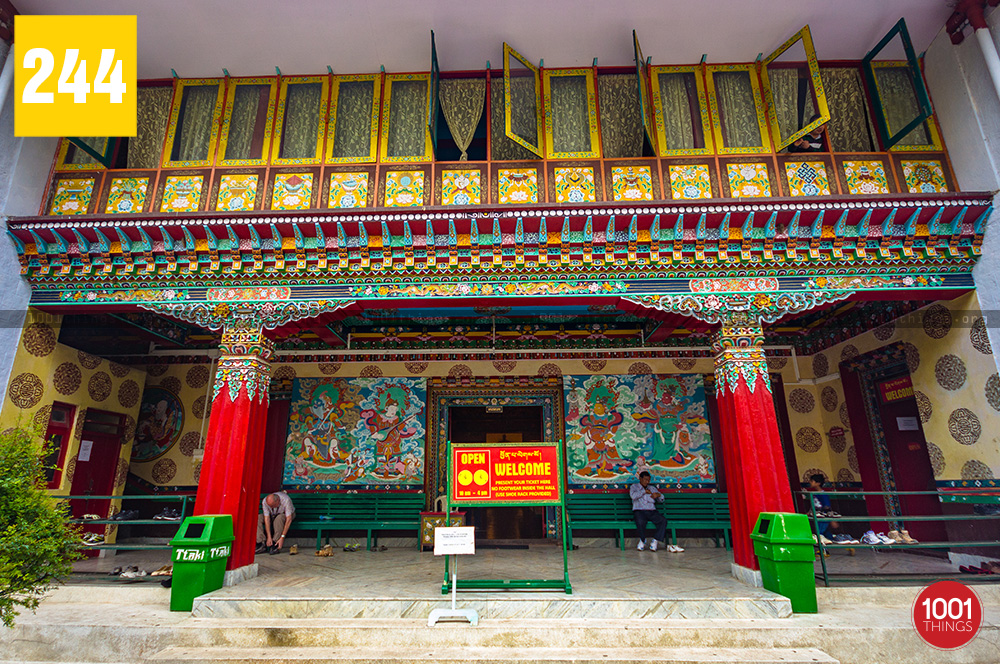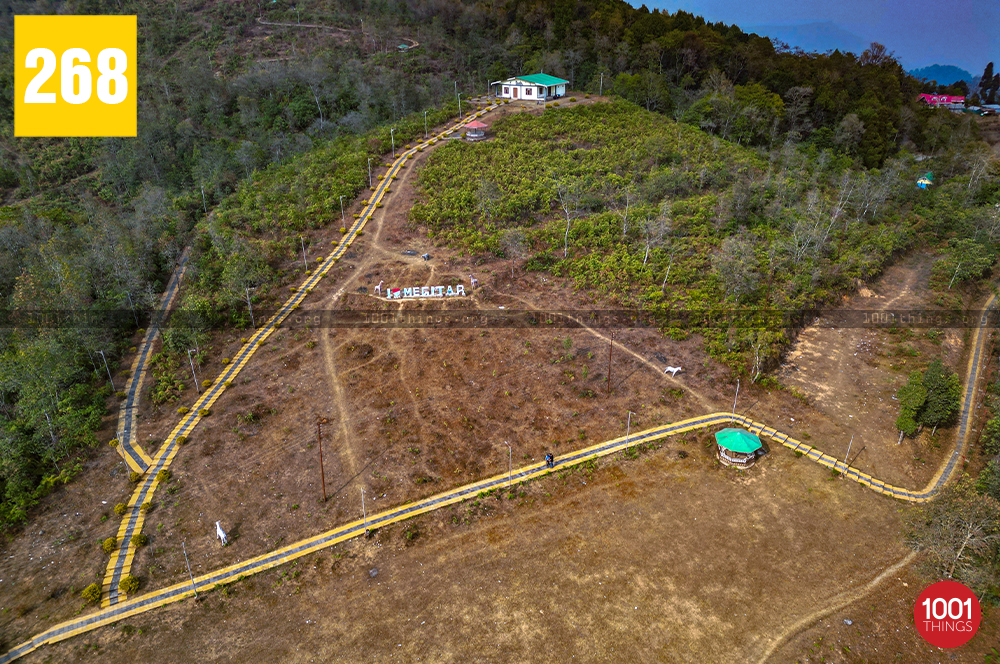The institute for studying and preservation of Tibetan art and culture.
Namgyal Institute of Tibetology is a Tibetan culture study institute and museum. Moreover, the institute is dedicated to the preservation and promotion of Tibetan culture. This is mostly accomplished through research and the promotion of research programs. Additionally, some of the major study projects undertaken here focus on religion, history, language, and art, among other aspects of Tibetan culture. Furthermore, Sikkim is one of the states with a considerable Tibetan population, which is why the research center focuses on Tibetan culture in the state.
The foundation stone was laid by His Holiness the 14th Dalai Lama in 1957.
The Namgyal Institute of Tibetology was founded in 1958, one year after His Holiness the 14th Dalai Lama placed the foundation stone in 1957. Furthermore, the institute was originally known as the Sikkim Research Institute of Tibetology, but the King of Sikkim, Sir Tashi Namgyal, later altered it to the Namgyal Research Institute of Tibetology. Notably, the current location of the institute was also donated by the then-King of Sikkim, Sir Tashi Namgyal.
Moreover, the Namgyal Institute of Tibetology is also a fine example of Sikkimese architecture. The façade of the main building is predominantly white and a shade of red, while the interior incorporates all the hues associated with Buddhism, including blue, red, yellow, green, and white. Additionally, the building exhibits exceptional craftsmanship, whether on the façade or the inside. It is a work of art in and of itself, and a wonderful example of Tibetan art. Furthermore, the general infrastructure of NIT has undergone significant alteration and extension over the years. A hall, a library, study rooms, studios, and an administrative wing are housed in a freshly constructed building.
It houses the world’s largest collections of Tibetan works.
The institute houses a museum of Tibetan iconography and religious art, as well as one of the world’s largest collections of Tibetan works outside of Tibet. Additionally, since 1964, the institute has also published a number of books and bulletins, including the Bulletin of Tibetology. Moreover, under the leadership of Mr. Tashi Densapa, the NIT’s new director, the institute embarked on a journey of expansion. Furthermore, this included restructuring its research wing and opening its doors to international collaboration. Importantly, this significant development took place in the summer of 2002.
This is accomplished by establishing new research and fellowship programs, hosting lecture series, seminars, and international conferences, publishing the Bulletin of Tibetology, monographs, and conference proceedings, and collaborating with international scholars. Moreover, the institute has grown into a thriving research hub in the Eastern Himalayas. Additionally, it fosters Buddhist and Tibetan studies, as well as Sikkim studies. Notably, the Namgyal Institute of Tibetology has gained notoriety as a must-see destination in Sikkim due to its works, beautiful location, architecture, and artifacts on display in the museum. Furthermore, the diverse art and culture showcased here are not only fascinating but also inspiring to art lovers and those who appreciate and enjoy learning about different cultures.
How to Reach Namgyal Institute of Tibetology
Airport: The Pakyong Airport is the closest airport to Namgyal Institute of Tibetology, situated approximately 25 kilometers away. The drive from the airport to the institute takes about one and a half hours. Alternatively, the Bagdogra Airport, located in the neighboring state of West Bengal, is approximately 125 kilometers away. This airport serves as one of the major airports in the area. If you fly into Bagdogra Airport, you have the option to either take a direct vehicle to Gangtok from the airport or travel to Siliguri and then take a vehicle from there.
Railway Station: The New Jalpaiguri Railway Station, located approximately 116 kilometers away, serves as the closest railway station to Namgyal Institute of Tibetology. Moreover, from NJP train station, you have the option to take a direct bus to Gangtok, which typically takes about 3 hours.
Places to Visit Near Namgyal Institute of Tibetology
Do Drul Chorten
Do Drul Chorten is just a short walk away from Namgyal Institute of Tibetology. Additionally, the venerable Trulshik Rinpoche, the leader of the Nyingmapa order of Tibetan Buddhism, built the stupa in 1945. Moreover, this Chorten or Stupa was constructed with the purpose of safeguarding the Kingdom of Sikkim from attacks by neighboring countries. It was also built to fulfill the intention expressed by Dud-Zom Rinpoche in 1944. Furthermore, Chorten Lhakhang and Guru Lakhang surround the stupa, featuring two colossal statues of Guru Padmasambhava. Notably, Kyabje Dodrupchen Rinpoche, one of the most prominent Nyingmapa Lamas in the world, has his seat at this site. Additionally, the site is often crowded with visitors who have come to spin prayer wheels and pay their respects.
Gangtok Ropeway.
The institute is also only a short distance from the Gangtok Ropeway. Furthermore, the Gangtok Ropeway is one of the city’s most popular tourist attractions. Notably, it was built in 2003 and is a 935-meter long bi-cable Jig-back Passenger Aerial Ropeway. Moreover, the Sikkim Legislative Assembly connects Deorali Bazar and Tashiling Secretariat via this ropeway. Additionally, the journey can be started at any of the route’s three terminal stops. Moreover, guests riding this ropeway may enjoy a panoramic view of the entire city of Gangtok. Additionally, the picturesque surroundings, the gushing Teesta River, and the snow-capped mountains can all be seen from above.
MG Marg Gangtok
MG Marg is known as Gangtok’s spirit and a shopper’s paradise due to its lined shops of all kinds. Moreover, it is only around a 10-minute drive from the institute, which is about 2 kilometers distant. Furthermore, there isn’t a type of shop you won’t find here, ranging from clothing to handlooms, handicrafts, electronics, and odd items. Additionally, the area is densely packed with various restaurants and eating establishments. Notably, the existence of a China Bazaar adds to the market’s appeal by providing decorations and inexpensive, fancy items. Moreover, there is something for everyone, which adds to the location’s excitement, beauty, and charm, as well as the thrill.
Directorate of Handicrafts and Handlooms
A must-see destination, MG Marg is an authentic warehouse of traditional handicrafts and handlooms, offering a wide range of exquisite items. Notably, you can find hand-woven carpets, blankets, shawls, thangka paintings, choktse (hand-carved foldable tables), hand-painted masks and dolls, as well as wooden dolls, dappled applique works, batiks, lamp-stands, shade, and bamboo craft. Furthermore, this is a fantastic area to go shopping, especially if you enjoy collecting handicrafts and handlooms.
Flower Exhibition Centre.
The centre has a medium-sized tropical greenhouse that boasts orchids, Anthuriums, and Liliums among the exotic plants on display. Consequently, some visitors come here solely to gaze at the flowers for hours. Furthermore, there is a little artificial water pond with a short bridge spanning it in the centre of the park. Notably, Sikkim often transports a wide variety of floral plants around the globe. Moreover, Sikkim’s floral legacy includes poppies, Gentians, and Primulas, while orchids and rhododendrons are particularly prized gems.

